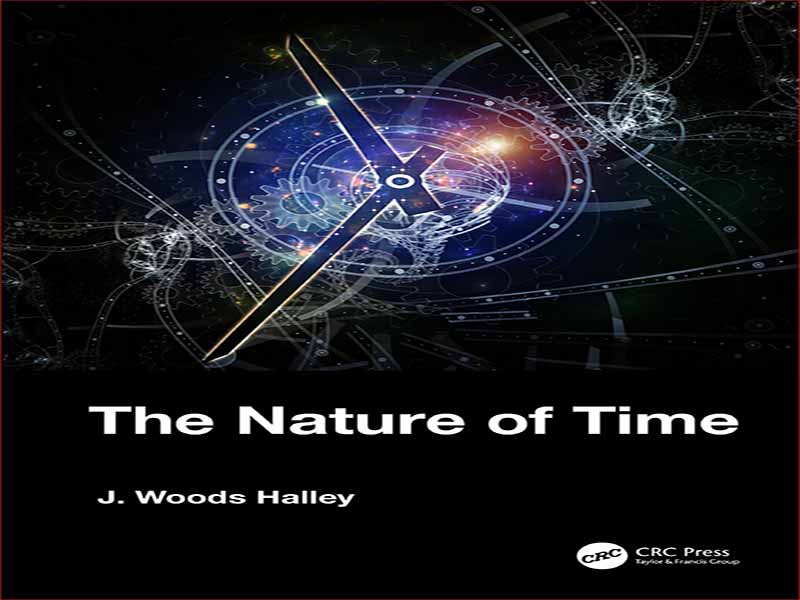- عنوان: The Nature of Time
- نویسنده: J. Woods Halley
- حوزه: زمان
- سال انتشار: 2022
- تعداد صفحه: 167
- زبان اصلی انگلیسی
- نوع فایل: pdf
- حجم فایل: 25.8 مگابایت
این کتاب ادراکات معاصر و تاریخی از زمان را از دیدگاه علمی و شهودی بشر بررسی و تقابل می کند. ساعتهای باستانی و مدرن، ایدههای آگوستینی، جهان نیوتنی تعیینکننده، ساعتهای بیولوژیکی، زمان عمیق، ترمودینامیک، مکانیک کوانتومی و نسبیت همگی به این دیدگاه کمک میکنند. تمرکز بر آن چیزی است که میتوان از فناوریها و علم استنباط کرد، برخلاف حدس و گمانهای آیندهنگر. فصل 1 ساعتها را توصیف میکند، از جمله ساعتهای اتمی سزیم که استاندارد زمان جهانی فعلی را ایجاد میکنند، تاریخچه توسعه ساعت، ساعتهای بیولوژیکی، درختان فیلوژنتیک، تاریخگذاری رادیواکتیو، و روشهای نجومی برای تعیین سن جهان. فصل 2 سوالات باستانی در مورد زمان را مطرح می کند که با درک ماهیت فنی ساعت ها به طور کامل به آن پرداخته نشده است. خلاصه اولیه برخی از این سؤالات که توسط آگوستین در قرن سوم پس از میلاد شرح داده شده است با شرحی از چگونگی ارائه مفهوم زمان توسط نیوتن، 1300 سال بعد، ارائه می شود که پاسخ هایی مانند ماهیت بی نهایت کوتاه ارائه می دهد. حاضر. مفاهیم مربوط به واقعیت رویدادها در گذشته، حال و آینده نیز مورد بحث قرار می گیرد. تصویر نیوتنی با تصویر شهودی انسان در تضاد است و احتمالات سفر در زمان و عود موقت به اختصار مورد بحث قرار گرفته است. فصل 3 قانون دوم ترمودینامیک را معرفی می کند و به چگونگی سازگاری آن با توصیف نیوتنی برگشت پذیر با زمان از یک جهان می پردازد، حتی اگر به نظر می رسد که یک “پیکان زمان” را تعریف می کند. ماهیت آنتروپی و ارتباط آن با دانه بندی درشت و ظهور نقش اساسی در بحث دارد. فصل 4 روش هایی را مورد بحث قرار می دهد که مکانیک کوانتومی دیدگاه نیوتنی را تغییر داده است و تفاسیر مختلفی از معنای مکانیک کوانتومی را با توجه به زمان در نظر می گیرد. فصل 5 عناصر اساسی نسبیت خاص و پیامدهای آنها را برای ماهیت زمان توصیف می کند. اتساع زمان و این واقعیت که حتی ترتیب زمانی رویدادها می تواند متفاوت باشد همانطور که در چارچوب های مرجع مختلف ثبت می شود، توضیح داده شده است. نمونهها برای اجتناب از یادآوری خلاصههای فعلی انتخاب شدهاند که چگونه توسعه علم از آن زمان تاکنون به آنها پرداخته است. این کتاب در اصل برای یک سمینار بین رشته ای برای دانشجویان مبتدی در دانشگاه مینه سوتا تهیه شده است. از مقدار کمی جبر، عمدتاً در ضمائم تکمیلی استفاده می کند، و هیچ دانش قبلی از فیزیک، شیمی، زیست شناسی یا نجوم را در نظر نمی گیرد. برخلاف بسیاری از کتابهای نیمهمحبوب به موقع، از گمانهزنی در مورد مهندسی (خوشبینی فنی) یا نظریه فیزیکی (رشتهها، گرانش کوانتومی حلقه، سیاهچاله در تروپی) جلوگیری میکند. درعوض، رویکرد پایهتری دارد و آنچه در حال حاضر شناخته شده (و ناشناخته) است را توصیف میکند تا به دانشآموزان و خواننده عمومی کمک کند تا زمان را بهتر درک کنند. جی وودز هالی استاد دانشگاه مینه سوتا در مینیاپولیس است. گروه تحقیقاتی او با استفاده از تئوری تحلیلی و شبیهسازی رایانهای، پدیدههای الکتروشیمیایی، از جمله منشاء حیات، و همچنین فازهای دمای پایین سیستمهای چند جسمی، از جمله ابرسیالیت و ابررسانایی را مطالعه میکنند. او در دانشگاه کالیفرنیا، برکلی و موسسه فناوری ماساچوست تحصیل کرده است و عضو انجمن فیزیک آمریکا است. او قبلاً کتاب هایی در مورد احتمال وجود حیات فرازمینی و مکانیک آماری منتشر کرده است.
This book reviews and contrasts contemporary and historical perceptions of time from scientific and intuitive human points of view. Ancient and modern clocks, Augustinian ideas, the deter-ministic Newtonian universe, biological clocks, deep time, thermodynamics, quantum mechan-ics, and relativity all contribute to the perspective. The focus is on what can be inferred from established technologies and science as opposed to futuristic speculation. Chapter 1 describes clocks, including the cesium atomic clocks establishing the current global time standard, a history of clock development, biological clocks, phylogenetic trees, radioac-tive dating, and astronomical methods to determine the age of the universe. Chapter 2 poses ancient questions about time not fully addressed by an understanding of the technical nature of clocks. An early summary of some of these questions as described by Augustine in the 3rd century CE is followed by a description of how Newton, 1300 years later, introduced a concep-tion of time which provided some answers, such as the nature of an infinitesimally short present. Implications concerning the reality of events in the past, present, and future are also discussed. The Newtonian picture is contrasted with the intuitive human one and the possibilities of time travel and temporal recurrence are briefly discussed. Chapter 3 introduces the second law of thermodynamics and addresses how it is compatible with a time-reversible Newtonian descrip-tion of a universe, even though it appears to define an “arrow of time.” The nature of entropy and its relation to coarse graining and emergence play a central role in the discussion. Chapter 4 discusses ways in which quantum mechanics has altered the Newtonian perspective, accounting for various interpretations of the meaning of quantum mechanics with regard to time. Chapter 5 describes basic elements of special relativity and their implications for the nature of time. Time dilation and the fact that even the temporal order of events can be different as recorded in differ-ent frames of reference are described. The examples are chosen to avoid evocation of currently summarizes how the development of science since then has addressed them. This book was originally developed for an interdisciplinary seminar for beginning undergradu-ates at the University of Minnesota. It uses a small amount of algebra, mainly in supplemen-tary appendices, and does not assume any prior knowledge of physics, chemistry, biology, or astronomy. In contrast to many semipopular books on time, it avoids speculation either about engineering (techno-optimism) or physical theory (strings, loop quantum gravity, black hole en-tropy). Instead, it takes a more grounded approach and describes what is currently known (and not known) to help both students and the general reader make better sense of time. J. Woods Halley is a Professor at the University of Minnesota in Minneapolis. His research group studies electrochemical phenomena, including the origin of life, as well as low temperature phas-es of many-body systems, including superfluidity and superconductivity, using analytical theory and computer simulation. He was educated at the University of California, Berkeley and the Massachusetts Institute of Technology and is a Fellow of the American Physical Society. He has previously published books on the likelihood of extraterrestrial life and statistical mechanics.
این کتاب را میتوانید بصورت رایگان از لینک زیر دانلود نمایید.
Download: The Nature of Time




































نظرات کاربران